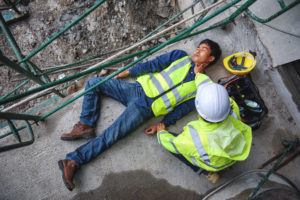 Construction accidents in Queens stand apart from other workplace injuries because they involve unique laws and legal challenges. These cases often require a closer look at safety rules, employer responsibilities, and the rights of workers under New York labor laws. What makes them different is that construction workers in Queens have legal protections and options that go beyond standard workplace injury claims.
Construction accidents in Queens stand apart from other workplace injuries because they involve unique laws and legal challenges. These cases often require a closer look at safety rules, employer responsibilities, and the rights of workers under New York labor laws. What makes them different is that construction workers in Queens have legal protections and options that go beyond standard workplace injury claims.
The risks on construction sites also create situations where multiple parties may share responsibility, from contractors to property owners. As a result, these cases often involve more complex claims and higher stakes compared to typical workplace injuries. This article explains why construction accidents in Queens are treated differently and what that means for those affected.
Specialized New York labor laws provide additional protections for construction workers in Queens
New York has labor laws that go beyond standard workplace rules. These laws recognize that construction sites involve higher risks, such as falls, falling objects, and unsafe equipment. Because of this, workers in Queens benefit from protections that other industries may not have.
Sections 200, 240, and 241 of the New York Labor Law are especially important. Section 240, known as the Scaffold Law, holds property owners and contractors strictly responsible for many height-related accidents. Section 241 covers safety standards for construction, demolition, and excavation work.
Local rules also add safeguards. For example, New York City requires certain workers to complete safety training and carry a Site Safety Training card. These measures aim to reduce hazards while holding employers accountable for unsafe conditions.
Injury claims under these laws can be complex. Many workers turn to experienced lawyers for construction accidents in Queens who understand how these protections apply. Legal guidance helps workers pursue compensation and navigate the challenges of labor law claims.
Employer negligence, such as failure to enforce OSHA safety standards, increases liability in construction cases
Construction work carries higher risks than many other jobs, so safety rules must be followed closely. If an employer ignores OSHA standards, the chance of accidents rises. This lack of enforcement can expose the employer to greater legal responsibility.
OSHA rules set clear requirements for equipment, training, and hazard control. Failure to meet these standards often serves as evidence of negligence in court. Therefore, workers injured on construction sites may have stronger claims compared to employees in less hazardous settings.
Courts often view OSHA violations as proof that an employer failed to provide a safe workplace. For example, missing guardrails, unsafe scaffolding, or lack of protective gear can all point to negligence. These conditions not only endanger workers but also increase the employer’s liability.
As a result, construction accident cases in Queens often involve more complex legal arguments. The combination of high-risk work and strict safety regulations makes employer negligence a central issue in these claims.
Construction accidents often involve multiple parties, complicating liability and claims
Construction sites usually bring together general contractors, subcontractors, property owners, and equipment suppliers. Each party may share responsibility for safety and site conditions. This mix of roles often makes it harder to determine who should be held accountable after an accident.
Unlike many other workplace injuries, construction accidents can involve third-party claims. For example, a worker may receive workers’ compensation but also pursue a claim against a negligent contractor or equipment manufacturer. These overlapping claims create more legal steps and often require proof of fault beyond the employer.
The involvement of multiple parties also affects how damages are calculated. One party may be responsible for unsafe site management, while another may be liable for defective equipment. Therefore, attorneys often need to sort through contracts, safety records, and witness accounts to identify all responsible parties.
As a result, construction accident cases in Queens usually take more time and detail than other workplace injury claims. The complexity lies in both proving negligence and dividing liability among several entities.
Workers can sue for pain and suffering beyond standard workers’ compensation benefits
Workers’ compensation covers medical bills and lost wages, but it does not pay for pain and suffering. The system was designed to give quick benefits without the need to prove fault, so emotional distress and other non-economic damages are excluded.
However, construction accidents in Queens often involve more than just the employer. If a third party, such as a contractor, property owner, or equipment manufacturer, caused the accident, the injured worker may file a personal injury lawsuit. This type of claim allows damages beyond standard benefits.
Through a personal injury case, workers can pursue compensation for pain, suffering, and reduced quality of life. These damages recognize the physical and emotional toll of a serious injury, which workers’ compensation alone does not address.
As a result, construction workers in Queens may have broader legal options than employees in other fields. The presence of multiple parties on a job site often creates opportunities to seek recovery outside the workers’ compensation system.
Wrongful death claims are more common due to the high fatality rates on construction sites
Construction sites often involve heavy machinery, tall structures, and dangerous tools. These conditions create a higher risk of fatal accidents compared to many other workplaces. As a result, wrongful death claims occur more often in this field.
Falls from scaffolding, equipment failures, and unsafe site conditions are frequent causes of deadly incidents. Unlike office or retail jobs, construction work exposes employees to hazards that can quickly turn fatal. This difference explains why families in these cases pursue wrongful death claims at a higher rate.
In addition, construction projects usually involve multiple contractors and subcontractors. That makes it harder to identify who is legally responsible after a fatal accident. Therefore, wrongful death claims in construction often require more investigation than claims from other industries.
Government safety rules exist to reduce these risks, but violations still happen. If an employer or contractor ignores safety standards, the chance of a fatal accident rises, leading to more wrongful death cases.
Conclusion
Construction accident cases in Queens differ from other workplace injuries because they involve unique labor laws, multiple parties, and higher safety risks tied to urban job sites. These factors create more complex claims than those found in many other industries.
Workers often face legal issues that combine both workers’ compensation and personal injury law. As a result, they may need to pursue several legal paths to recover medical costs, lost wages, and other damages.
Because of these differences, construction accident cases in Queens require careful attention to local regulations and industry standards. This sets them apart from typical workplace injury claims and shapes how injured workers and their families move forward.


